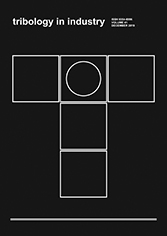Volume 41, No 1, 2019, Pages 1–13
Simulation of Contact Area and Pressure Dependence of Initial Surface Roughness for Cermet-Coated Discs Used in Disc Brakes
Authors:
G. Riva* ![]() ,
G. Perricone
,
G. Perricone ![]() ,
J. Wahlström
,
J. Wahlström ![]()
DOI: 10.24874/ti.2019.41.01.01
Abstract:
Friction, wear, and emission performance strongly depend on the contact pressure and area at the interface of the pad and disc. The contact situation at the pad-to-disc interface can be explained by the formation and destruction of mesoscopic sized contact plateaus on the pad surface. Experimental studies report that the initial surface roughness of cermet-coated discs strongly affects friction, wear and emission performance. This is explained by the formation of secondary plateaus on the disc surface. The aim of this work is to extend an existing cellular automaton approach to include the formation of secondary plateaus on the disc surface in order to explain experimental results reported in the literature. First, to investigate the validity of the novel simulation approach, a cermet-coated cast iron disc is tested against a low-met pad material with a pin-on-disc tribometer. The same conditions are used as input in a simulation. Then, the initial disc roughness influence on contact pressure and area of the same cermet-coated disc is compared with results reported in the literature. The topographies of the measured and simulated disc surfaces are qualitatively in line. An initial rougher disc surface results in a considerably lower contact area than does a smother surface.
Keywords:
Disc brakes, Wear, Cellular automaton, Contact plateaus, Contact area, Surface topography





